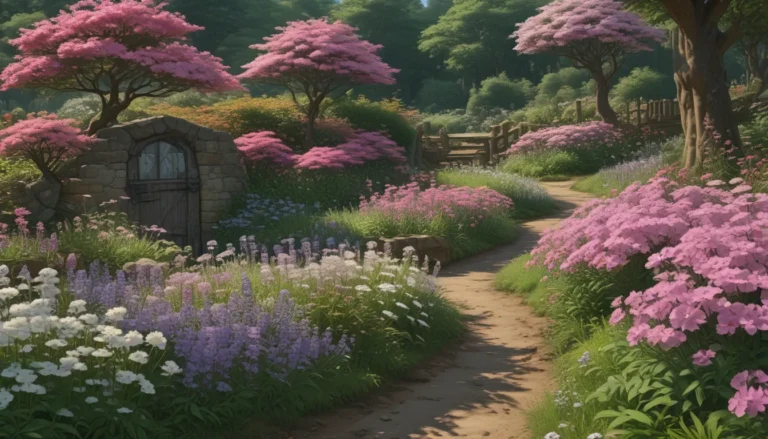A Comprehensive Guide on Growing and Caring for Witch Hazel Plants

If you’re a fan of unique and stunning plants, then witch hazel (Hamamelis spp.) is right up your alley. These deciduous flowering shrubs and trees offer not only beautiful flowers but also superb foliage and branching habits year-round. With early or late blooms that steal the spotlight during dormant periods, witch hazels are a must-have in any garden.
So, let’s delve deeper into the world of witch hazel plants with this in-depth guide. From cultivation and history to propagation techniques, here’s everything you need to know to successfully grow and care for these enchanting shrubs.
What You’ll Learn
- What Is Witch Hazel?
- Cultivation and History
- Propagation
- How to Grow
- Growing Tips
- Pruning and Maintenance
- Species to Select
- Managing Pests and Disease
- Best Uses
- Quick Reference Growing Guide
What Is Witch Hazel?
Belonging to the witch hazel family (Hamamelidaceae), witch hazels are unique plants native to China, Japan, and North America. They are known for their distinctive flowers with crinkly, ribbon-like petals that come in various colors from yellow to brownish red. Witch hazels bloom either in late winter to early spring or in the fall, setting them apart from other plants.
Besides their striking flowers, witch hazels are also valued for their leaves and fruit capsules, as well as their medicinal properties. The name “Hamamelis” originates from Greek words meaning “with” and “apple,” referencing the plant’s ability to bear fruit from the previous season’s flowers. With their individual characteristics and appealing aesthetics, witch hazels are a delight for gardeners and nature enthusiasts alike.
Cultivation and History
Apart from their ornamental value, witch hazels have a rich history of medicinal use dating back to Native American traditions. The plant’s branches were employed in water divination and used to treat various ailments, including skin irritations and burns. Witch hazel’s healing properties eventually led to the development of commercial products that are still popular today.
Theron T. Pond and Thomas Newton Dickinson played pivotal roles in popularizing witch hazel-based remedies in the mid-19th century, laying the foundation for its widespread use in medicines, lotions, and ointments. As a landscape plant, witch hazel’s resilience and year-round beauty make it a popular choice among gardeners.
Propagation
While propagating witch hazel from seeds, cuttings, or grafting can be challenging, it’s best left to experienced growers. For the average home gardener, propagating via suckers or transplanting established plants is more practical and effective.
From Suckers
Witch hazel plants readily produce suckers at their base, which can be carefully dug up, transplanted, and nurtured into new plants. This method allows for easy propagation and the expansion of your witch hazel collection.
Via Transplanting
Transplanting potted nursery specimens in early spring is a viable option for new plantings. Ensuring proper soil conditions and watering practices is essential for the successful establishment of transplanted witch hazels.
How to Grow Witch Hazel Plants
Growing witch hazel plants doesn’t require magic but rather a few key considerations. Understanding their climate, soil, and irrigation needs is crucial for their healthy growth and development.
Climate and Exposure Needs
Witch hazels are hardy plants that thrive in a wide range of USDA Zones. Providing the right exposure, whether full sun or partial shade, can influence their flowering and branching patterns. Ideal soil conditions include fertility, good drainage, and slightly acidic pH levels.
Irrigation and Fertilizer Needs
Maintaining moderate soil moisture and applying balanced fertilizers as needed can support the optimal growth of witch hazel plants. Monitoring soil moisture levels and providing essential nutrients help ensure their overall health and vigor.
Growing Tips
- Full sun is best for flowering and dense foliage.
- Provide well-draining, fertile soil with a pH of 4.5-6.5.
- Irrigate whenever the top inch of soil dries out.
Pruning and Maintenance
Regular pruning of suckers and damaged branches, along with maintaining mulch around the root zone, promotes the overall health and appearance of witch hazel plants. Pruning in early spring and proper mulching practices can help sustain their vitality year after year.
Species to Select
With five distinct species within the Hamamelis genus, each offering unique characteristics and bloom times, selecting the right one for your garden can be rewarding. From the big leaf and common witch hazels to Chinese, hybrid, Japanese, and vernal varieties, there’s a diverse range to choose from based on your preferences and growing conditions.
Big Leaf
The discovery of H. ovalis highlighted the biodiversity within the witch hazel family, with its large leaves and fragrant winter blooms making it a remarkable addition to any garden.
Common
H. virginiana, commonly known as the common witch hazel, is a popular choice for its widespread distribution and attractive foliage and blooms. Its adaptability and ornamental value make it a versatile landscaping plant.
Chinese
H. mollis from central China stands out for its compact size, fragrant blooms, and rounded foliage, making it a delightful addition to gardens with limited space.
Hybrid
The hybrid Hamamelis x intermedia offers a wide range of cultivars with diverse bloom colors and foliage variations. From ‘Arnold’s Promise’ to ‘Diane’ and ‘Jelena,’ these hybrids showcase the beauty and versatility of witch hazel plants.
Japanese
H. japonica, a Japanese native, features narrow yellow flowers and a spreading growth habit, adding a touch of elegance to any landscape design.
Vernal
Distinct from common witch hazel, H. vernalis boasts red and orange blooms and a dense growth habit, making it a standout choice for screens and hedges.
Managing Pests and Disease
To protect your witch hazel plants from common pests and diseases, vigilant monitoring and timely interventions are essential. From gall aphids and Japanese beetles to leaf blotch and powdery mildew, knowing how to identify and address these issues is key to maintaining healthy plants.
Insects
Effective pest management strategies can help control insects like gall aphids and Japanese beetles, preventing damage to plant tissues and reducing the spread of diseases. Early detection and appropriate treatments can minimize the impact of insect infestations on witch hazel plants.
Disease
Promptly addressing leaf blotch and powdery mildew through sanitation practices, pruning, and fungicidal applications can limit their severity and protect the overall health of witch hazel plants. Proper plant care and preventive measures play a crucial role in disease prevention and management.
Best Uses for Witch Hazel Shrubs
Whether as early or late bloomers, witch hazel plants have a place in various garden settings, including screens, hedges, borders, woodland gardens, and specimen plantings. Their ornamental value and medicinal properties make them versatile and valuable additions to any landscape design.
Quick Reference Growing Guide
- Plant Type: Deciduous landscape tree or woody shrub
- Flower/Foliage Color: Yellow to brownish-red/dark green
- Native to: China, Japan, North America
- Water Needs: Moderate
- Hardiness (USDA Zones): 3-9
- Maintenance: Low
- Bloom Time: Late winter to early spring or fall
- Exposure: Full sun to partial shade
- Soil Type: Fertile, moist
- Time to Maturity: 2-3 years
- Soil pH: 4.5-6.5
- Spacing: Width of mature spread or greater
- Soil Drainage: Well-draining
- Attracts: Birds, insect pollinators
- Height: 6-20 feet
- Spread: 6-20 feet
- Family: Hamamelidaceae
- Genus: Hamamelis
- Common Pests and Diseases: Japanese beetles, witch hazel gall aphids; Phyllosticta leaf blotch, powdery mildew
- Species: Japonica, mollis, ovalis, vernalis, virginiana
Don’t Dismiss Hamamelis
In conclusion, growing and caring for witch hazel plants can be a rewarding experience for gardeners of all levels. With their unique characteristics, diverse species, and versatile uses, witch hazels offer endless possibilities for landscaping and enjoyment. By following the tips and recommendations outlined in this guide, you can cultivate healthy and vibrant witch hazel plants that will enhance the beauty of your garden for years to come.
So, why wait? Add a touch of witch hazel magic to your garden today and discover the natural beauty and charm of these enchanting plants. Share your experiences and thoughts on growing witch hazel in the comments below!
For more plant selection ideas and gardening tips, check out these related articles:
- How to Grow and Care for Euonymus Shrubs
- How to Grow and Care for Viburnum
- How to Grow Hydrangeas for Big Blossomed Beauty





